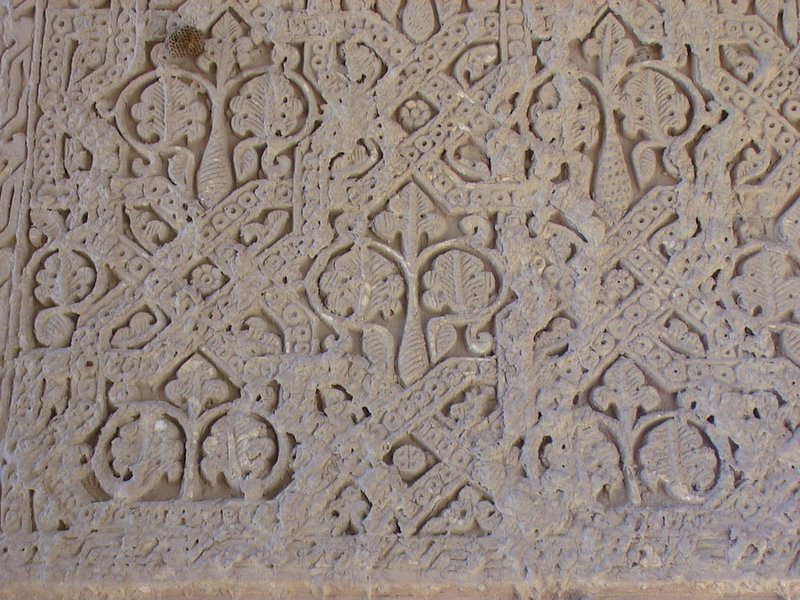- Who were the Wise Men
- The Jewish Influence on Fire Worship
- Cutting the Shah Nameh
- Seekers! Deciphering Images for Determined Purposes
“If he had been thy guest, why with his mace, Cow-headed, has he done such violence?”
Shah Nameh
Often images determine purpose. Artifacts and images found in an ancient city often dominate the impression of what life was like previously. On a four-day visit to Afghanistan in 2006, I made a one-day journey to the area. Heading out alone presented risks, so my contacts repeated the maxim to return before dark. So, I found a local van that took me from Mazar Sharif to the ancient town of Balkh.
In my studies of this ancient city, I knew of the church tradition that the disciple Thomas preached there, and the early church writer, Bardasian, stated that a well-established church dwelled in this location—the thousand years of this church existed from the second century till the 13th when Genghis Khan’s invasion leveled the city. Also, the beloved Mevlana Rumi was born there, and his family fled to the West during this invasion. For these reasons and most likely the chance to see the city again would not present itself – I adventured to survey the ruins of this acclaimed city.

The van took me to the town center, where only a tiny bazaar evidenced itself to civil life. I walked along the ancient half-leveled mud-brick walls toward the main site. The wall structure in this location was massive and extensive. One of the highlights of this visit was seeing the nine-domed mosque structure, which was half-standing and depicted palmette-shaped crosses.[1] The depictions seemed to allude to the Christian influence as the top three-leaf images and a small circled cross below the palm-liked cross. The building’s purpose was worship, and these designs instilled a hesitancy in the heart of the artisans, as if they were not willing to forsake the cross. Whether true or not, we may never know.
I met a young Afghan man at the city site, resting on one of the mounds. He took me to an enlarged hole in the ancient city mound of dirt. He stated this spot was where one of the essential old buildings existed. From a simple glance, if it was a temple, bath, or even a civil site, no evidence made any guess possible. Then, as we walked and talked, he said he had a few things he wanted to show me.
I waited in the alley near his house, and he brought out a few archaic items. One was a multi-spout bronze standing lamp, reminding me of a civilization that depended on this each evening. Another miniature figure looked like a household idol, but the third was a small ceramic tile with a ruler’s image. He wore a cap with horns and had an ox or cow-headed scepter in his hand, reminiscent of Feridun in the Shah Nameh. In showing these images, my guide’s willingness intended to make a sale. Knowing I did not want to tempt fate, I was not about to buy some ancient object and then travel by local transportation through the northern region, eventually crossing a border. I could imagine the next political crisis formulating with a simple alley purchase. I thanked him for his time and decided to explore on my own, thinking about these images determining Balkh’s purpose.
These images of city ruins and clay or ceramic images represented the past. They gave hints on how they lived and their beliefs of value. These images belong to former dwellers of Balkh, and even a short glimpse gave meaning. My mind remembered that image determines purpose. The depictions demonstrated deep insights into what Balkh valued. Now, this young man transmitted information to the present. These finds of Balkh portrayed ancient veneration and gave hints concerning what their makers loved. Feridun is a powerful image from the mythical Persian past depicting glory. The mud mounds limited the past Balkh acclaims but came alive with these art depictions.
God’s image reflects what he values. He gives us meaning and purpose since we are made in His image. The Scriptures say, “So God created man in his own image, in the image of God he created him; male and female he created them. And God blessed them.” (Genesis 1:27-28a, ESV). Like these ancient images, the Lord bestows value on humanity. The image displays a desired relationship and the glory of God.
Created in the image of God, man reflects aspects of Yahweh – His image determines purpose. God imparts himself and desires a continued possibility to relate together. The ancient items from the ancient city of Balkh reminded me of the past. The old formation of ruined walls and the massive mound of the former town are recollections in my mind, but the images of a former king and a lamp to light in the darkness imprint more deeply in my mind. These items reflect their beliefs and aspects of their life. How they lived, and what was important to them.
The discovery of ancient images gives impressions about why they came into being. What do you think? Why did God make man in his image? Doesn’t this demonstrate his purpose and care for us? How does a deity who shares his image differ from one who, in his absoluteness, cannot do this? Check out Searching Below the Surface, where this idea is explored.
He blessed us with his image and gives us reasons to live for him, even today!
[…] We also know that crosses exist from an early period in Takhti Sangin and Balkh.[2]see https://twitter.com/of_tajikistan/status/1459458876152164352 – this picture by the […]